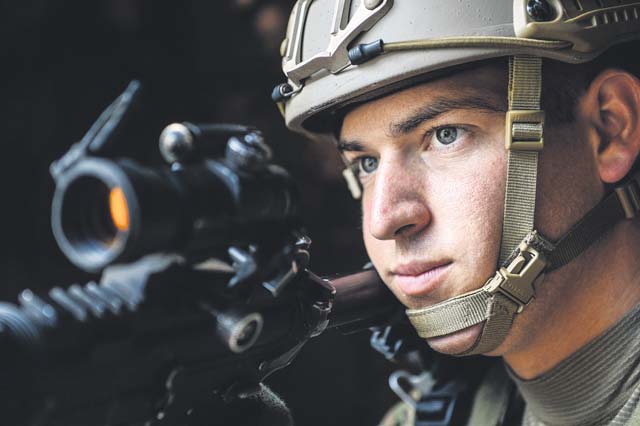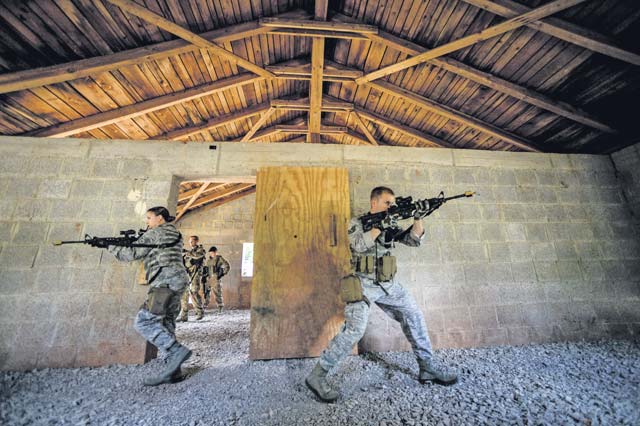
BAUMHOLDER, Germany — First responders from Ramstein came together to train on urban evacuation procedures at the biannual Tactical Combat Casualty Care course Aug. 3 through 6 on Baumholder.
More than 20 Airmen from the 435th Contingency Response Support Squadron, 435th Security Forces Squadron and the 86th Medical Group participated in the course, which tested them in situations that could occur in a hostile environment.
According to Tech Sgt. Jose Obregon, 435th Contingency Response Group independent duty medical technician, TCCC is an extremely efficient system.
“It has the highest survivability rate in combat when taking (care of) casualties because you are preventing people from getting injured,” Obregon said.
All U.S. Air Force special operations groups incorporate TCCC into their training because of its success in the field.
During the course, they practiced urban medical evacuation techniques, close-quarters combat, troop leading procedures and experienced trauma simulations.
Throughout the first two days of the classroom portion, instructors took students through drills to familiarize them with combat lifesaver training and self-aid and buddy care.
After reviewing these skills, instructors taught students the steps that they should take when they come in contact with enemy fire. The lesson included how to gain fire superiority and treat uncontrolled bleeding with a tourniquet while continuing tactical field care with the medical training they receive.
Finally, they took the Airmen to the training range to practice the techniques before being tested on their performance during the Field Training Exercise.
“It’s been a much needed experience, especially for 435th (CRG) members,” said Staff Sgt. Andrew Bowers, 435th CRSS Ground Combat Readiness Regional Training Center NCOIC of medical operations. “For those who are not defenders (security forces members) or medics, it allows us to integrate on another level … It’s good to train together because we work closely with them.”
“It’s important to do this training because not only are you equipping a small group of people with these skills, but they will pass it on to other deploying members,” Obregon said. “In turn, those members are getting a piece of the best medical training offered by the Department of Defense.”
This training will continue to save lives and prevent injuries as it is passed on throughout the Air Force.



